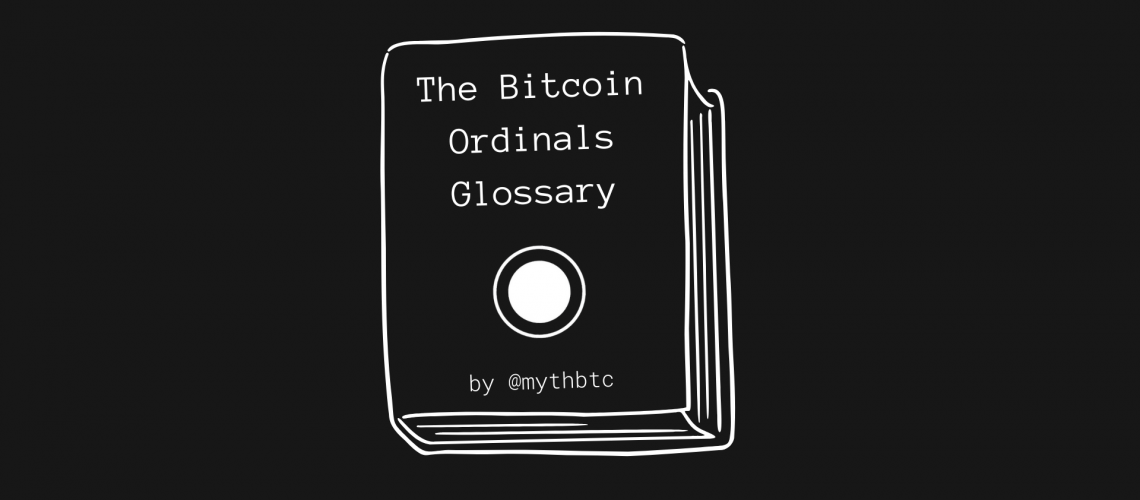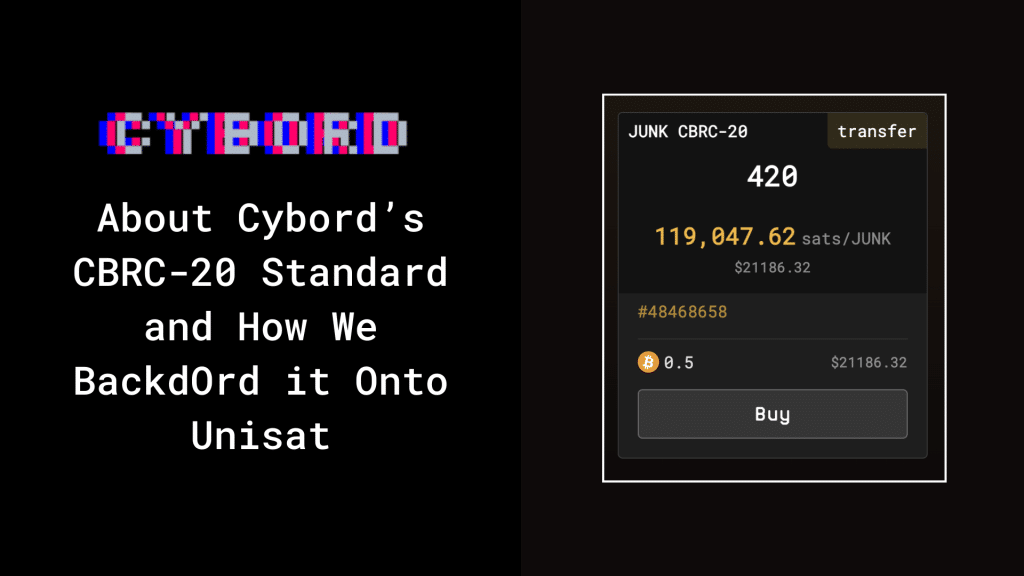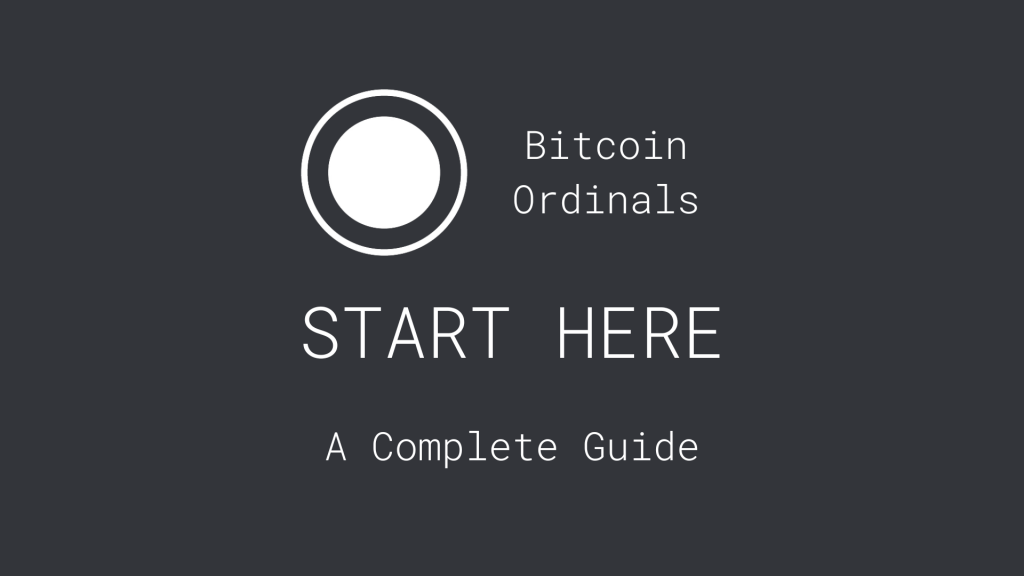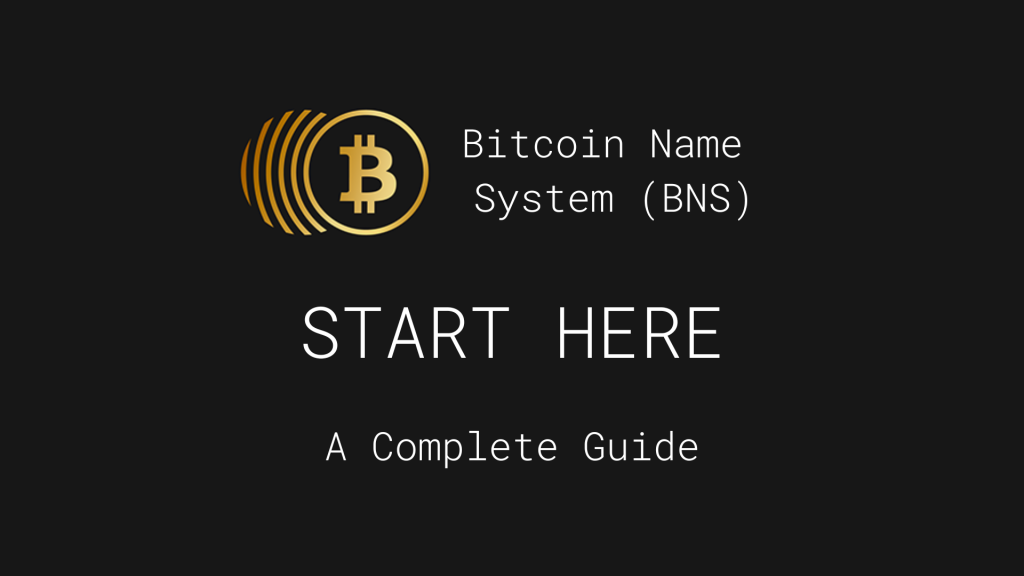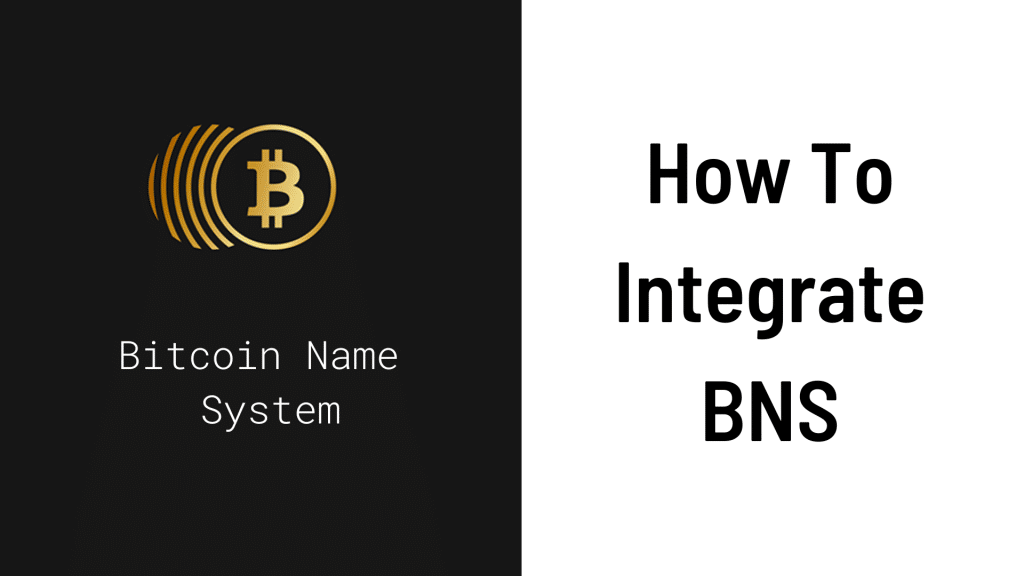Atomicals
Atomicals is a UTXO-based protocol for storing data on the Bitcoin blockchain (separate from ordinals). Although not anywhere near as popular as ordinals, it has been integrated by several major players including UniSat. The most popular Atomicals asset is the $ATOM token.
Bitmap
Bitmap is a metaverse standard created by @blockamoto utilizing inscriptions. In this standard, each block on the Bitcoin network can be thought of as a claimable parcel of land or a “bitmap.” A block is claimed by inscribing text like “200.bitmap” (blocknumber.bitmap). The majority of past blocks were claimed in June, 2023. Once all past blocks were claimed, it was said that Bitmap was “blocked out.” As new blocks are mined, the new bitmaps are now mostly claimed by bots. An individual bitmap is often displayed as a collection of one or more orange squares representing the transactions in the particular Bitcoin block (s/o Digital Matter Theory). Bitmap has been integrated into a number of applications including Bit Earth, which overlays bitmaps onto a digital rendering of the Globe.
Bj
A common salutation used by members of the Bitcoin Puppets community
Block Reward
A block reward is an incentive given to cryptocurrency miners for validating blocks of transactions on a blockchain. The Bitcoin block reward is made up of 1) new coins and 2) transaction fees. The initial reward (not including transaction fees) was 50 BTC, but it decreases by 50% every halving (every 210,000 blocks) and will reach 0 in 64 halvings at which point Bitcoin’s max supply of 21 million tokens will have been reached and transaction fees will be the only thing left incentivizing miners. The popularity of Ordinals has contributed to many of the highest-reward blocks in Bitcoin history, with many hoping that Ordinals will pave the path to a financially sustainable future for Bitcoin miners. Casey Rodarmor has stated that he created Ordinals to bring such a fee market to Bitcoin and secure its future.
BNS
BNS (Bitcoin Name System) is a decentralized equivalent to the traditional Domain Name System (DNS) on the Stacks Network. Originally launched on Namecoin in 2014, BNS migrated to Bitcoin with operations registered in the OP_RETURN field before finally landing on Blockstack, which eventually became the Stacks Network (read about BNS history). For a name system on Bitcoin L1, check out SNS.
BRC-20
BRC-20 was the first ordinals-based fungible token standard created by Domo on March 9th, 2023 with token operations performed with JSON inscriptions. As the first token ($ORDI) minted out quickly, builders like UniSat and brc-20.io developed BRC-20 features, with UniSat leading the way with a non-custodial BRC-20 marketplace enabled by PSBTs. By May 2023, $ORDI and other BRC-20 tokens had been listed on CEXs such as Gate and Huobi. Binance followed up with an $ORDI listing in November of the same year, with it reaching a $1B market cap in December 2023 (a mere ten months after launch).
BRC-420
BRC-420 is an inscription-based metaprotocol encoded with XML used to define more complex assets such as 3D objects with recursion intended to be used across games, metaverses, etc.
brc-20.io
brc-20.io, created by X user @Fukoshima1 was the first BRC-20 token tracker that made it easy to monitor all deployed tokens, mint percentages, holders, etc. The domain name is no longer owned by the same individual.
Benny The Dev
Benny The Dev is an early Ordinals builder and the founder of Trac Systems, which is attempting to develop Trac as the “Chainlink of Bitcoin” as well as developing the fungible token standards TAP and PIPE. The TRAC token was perhaps the first BRC-20 token which offered a credible prospect of utility. Benny also notably created one of the first BRC-20 indexers and was instrumental in the development of Bitmap indexing.
Burn
To “burn” means to send a digital asset to an address from which it can no longer be accessed. Project teams often do this to reduce the circulating supply of an asset and (ideally) increase its value.
BVM
BVM, or Bitcoin Virtual Machine, is a modular blockchain metaprotocol that lets you launch a Bitcoin L2 in a few clicks.
Casey Rodarmor
Casey “Ordfather” Rodarmor is an avid furry and bitcoin developer who created Ordinals Theory, the Ord Client, and the Runes Protocol. Casey now develops the Ord Client in collaboration with @raphjaph. He also co-hosts the Hell Money Podcast with Erin Redwing.
CBRC-20
CBRC-20 is a more efficient variant of BRC-20 created by @bc1plainview and @junkfoodpkroot under the identity @CyBORg_BTC as a first step in introducing Motoswap, a supposed “Uniswap for Bitcoin.” The two founders were formerly part of the Oshi team which proposed a system to enable Bitcoin DeFi that never materialized. Holders of $OSHI, the BRC-20 token associated with this former (failed) project, were airdropped $MOTO CBRC-20 tokens on a 1:1 basis in December, 2023.
Colored Coins
Colored coins was an early Bitcoin protocol co-created by Ethereum founder Vitalik Buterin and five others. Similar to Ordinals, it allowed for the creation and transfer of secondary assets on top of Bitcoin transactions. Although it was integrated into a few wallets, it never gained much steam.
Cursed Inscription
A set of inscriptions from the early days of Ordinals that were not recognized by the Ord Client. They used features that were later added (e.g. parent-child). Cursed inscriptions were officially recognized at the Jubilee update in January 2024 and assigned negative inscription numbers from -1 to -472,043.
Domo
X user @domodata, often referred to as “Domo,” is famous for creating the BRC-20 semi-fungible token standard and its first token, $ordi, on March 9th, 2023 which now has a market cap of $1.6 billion. After creating BRC-20, Domo took a hands-off approach for a while, with Unisat doing most of the work to make BRC-20 usable, including building a marketplace. As BRC-20 has evolved, Domo has continued to provide input in collaboration with the Layer 1 Foundation to advance the protocol.
Digital Matter Theory
Digital Matter Theory proposes that it is possible to create a form of digital substance by leveraging the inherent patterns present in data. For example, the natcats NFT collection is generated based on data present on the Bitcoin blockchain. There are also fungible tokens which use this principle. For more on the subject, see What are Non-Arbitrary Tokens and $NAT on Bitcoin?
Dust Limit
The dust limit is a threshold in cryptocurrency networks that defines the minimum amount of a token that can be transferred to ensure transaction efficiency and to prevent network spam with insignificant amounts of data. On Bitcoin, this means that a standard UTXO is typically at least 546 satoshis. So if you purchase an inscription, runes tokens, or rare satoshi, the UTXO containing your asset will have enough additional satoshis to be above the dust limit.
Dutch Auction
A Dutch auction is a bidding process where the auctioneer starts with a high asking price, which is gradually lowered until a participant accepts the current price. This style of auction is often used in ordinals.
Erin Redwing
Erin Redwing is a personal friend of Casey Rodarmor, astrology / witch girl and the co-host of the Hell Money Podcast.
Fee Rate
The fee-rate refers to the amount of transaction fee paid per byte of data in a transaction, typically measured in satoshis per byte (or sat/vB), which determines the priority and speed of the transaction’s inclusion in a block by miners. This is similar to gas in Ethereum. When the network is highly congested, it can be very expensive to mint and trade ordinals. You can monitor the fee rate with many tools including mempool.space.
Flip
Flip means, “to surpass the market cap of.” “$X token/project will flip $Y token/project” is often used as a rallying call for the community surrounding a digital asset.
Gamma
Gamma, originally STX NFT, was founded by Jamil Dhanani in 2021 as a Stacks NFT marketplace, raising VC money shortly after. After Stacks network activity plateaued in 2022, the platform rebranded to Gamma with Nick Sainato at the helm and explored integrating Ethereum NFTs. However, shortly after Casey Rodarmor released Ordinals, Gamma pivoted to an Ordinals-first company, releasing one of the first publicly-open inscription tools on February 9th, 2023. They then integrated PSBTs into their marketplace on March 20th 2023 to enable Ordinals trading. This move made them one of the first marketplaces to enable Ordinals trading after the likes of Ordswap and Ordinals Wallet.
Hell Money Podcast
Indexer
Software that tracks the operations of a Bitcoin metaprotocol such as BRC-20, SNS, or Runes. The most popular indexer is the Open Protocol Indexer. An indexer can be thought of as one implementation of a metaprotocol. While it is up to a metaprotocol creator to build an indexer and index their own protocol at first, any metaprotocol which gains a significant number of users is indexed by many different parties to ensure trust and reduce the likelihood of dishonesty. At the extreme, this resulted in the creation of the Layer 1 Foundation which is now responsible for governance of the BRC-20 protocol.
Inscription
An an inscription is data recorded immutably on the Bitcoin blockchain with the Ordinals Protocol. This could be text/json data, jpeg, png, mp4, etc.
Inscription Number
Inscription number refers to the order in which an inscription was created, starting at the first inscription (0). A number of noncompliant inscriptions, called cursed inscriptions, were later added with negative inscription numbers in an Ord Client update called “The Jubilee.” Low inscription numbers often (but not always) contribute to higher valuations by collectors.
Leonidas
Mempool
A temporary pool holding pending Bitcoin transactions waiting to be included in a block. When congested, transaction fees rise as users compete for faster processing. Monitoring the mempool can help with cost-effective Ordinal transactions.
Mempool Sniping
Mempool Sniping is a method of purchasing an inscription or other asset (e.g. rare satoshi) another buyer has already broadcasted a buy transaction for by signing the same PSBT they have signed and broadcasting your transaction with a higher fee. Because the average Bitcoin block takes 10 minutes, there is ample opportunity for this as transactions are pending in the mempool. Mempool Sniping typically occurs when a seller mistakenly lists a valuable inscription for very cheap. The same phenomenon also takes place in open mints (e.g. a BRC-20 mint), where mint transactions can be frontrun. Platforms and services like Magisat enable even non-technical users to do this. This has been a significant issue for ordinals user experienc3e.
Merlin Chain
Merlin Chain, billed as a Bitcoin L2, is a sidechain built on Polygon’s ZK technology to address the scalability limits of Bitcoin in the midst of the Ordinals craze. After the launch of the “Merlin’s Seal” staking program, users staked over $2B worth of assets including valuable inscriptions and bitmaps to receive airdrops of the $MERL token.
Metaprotocol
A protocol whose operations are initiated on Bitcoin with inscriptions or OP_RETURN data but validated by an off-chain indexer. Examples include BRC-20, Runes, and Bitmap. Off-chain validation is necessary because Bitcoin does not have complex smart contracting capabilities like Ethereum.
Ordfluencer
A portmanteau of Ordinals Influencer, sometimes used derogatorily to refer to popular Ordinals X users such as Udi Wertheimer, Trevor Owens, Bitgod, and Leonidas. These “ordfluencers” often speak on the Ordinals Show X space and collaborate in other ways. The perception by those who use the term derogatorily is that they farm user engagement, are out of touch, and give bad market advice. However, the group has collectively brought a lot of attention to ordinals, educated many users, and provided a platform for many projects.
Ordinals Show
A reoccurring popular X space that was started in the early days of Bitcoin ordinals to discuss ordinals projects, tech, culture, etc. Frequent speakers include Ordfluencers such as Trevor Owens, Leonidas, and Udi Wertheimer.
Ordinals
Ord Client
The Ord Client/Ord is Casey Rodarmor’s implementation of Ordinals Theory, including a command line wallet, an index, and an explorer (see ordinals.com).
Ordinal Theory
Created by Casey Rodarmor, Ordinal theory proposed a numbering system for satoshis, enabling them to be “tracked” on an individual basis. In this system, satoshis are assigned numbers in the order that they are mined. Afterwards, it’s first-in-first-out. This means that if you mined the first Bitcoin block, you would have satoshis 0-4,999,999,999 (first block reward was 50 BTC and each BTC has 100,000,000 satoshis). If you then sent a 500 satoshi transaction with one input and two outputs, the two outputs would contain satoshis 0-499 and 500-4,999,999,999 respectively.
When the government prints dollars, they are physically distinct (not only because they have unique serial numbers). Satoshis are not literally unique, which is why we call it ordinal theory. The ordinal theory numbering system is often acknowledged as a “collective hallucination” because there is technically no such thing as unique satoshis. Satoshis are represented by a simple int64 datatype in UTXOs. Ordinals theory is simply a frame for viewing reality that enables us to use satoshis as a carrier for NFTs, tokens, etc.
Ordinals Wallet
Alongside Ordswap and UniSat, Ordinals Wallet is an ordinals marketplace founded by BSV builders. Founders @coinyeez and @nondualrandy previously created Twetch App, a decentralized X alternative where posts are stored on-chain on BSV. While dominant in the first few months of ordinals trading in 2023, Ordinals Wallet was overtaken in volume by OKX, UniSat, and Magic Eden in mid to late 2023 and has since focused more on being first to market with new protocol integrations – TAP & NAT, Doginals, Runes, etc. As of April 2024, they are sitting at 4th most volume, with periodic spikes created by these new protocol integrations.
OP_RETURN
Ordswap
Ordswap, founded by BSV builder and RelayX founder Jack Liu, was the first marketplace to enable non-escrow ordinals purchases with PSBTs in early March 2023. Ordswap continued to make up a significant portion of ordinals marketplace volume until May 2023, after which they were largely outcompeted by Magic Eden, Ordinals Wallet, and OKX.
PIPE Protocol
PIPE is a UTXO-based fungible token protocol inspired by Runes and BRC-20 created by Benny The Dev / Trac Systems.
PFP
PFP is short for “profile picture.” Many Ordinals projects are created with the intent that buyers use them as profile pictures. This is a great mechanism for spreading awareness. PFP can also be used as a verb. E.g. “I think I’ll PFP my pup.” Translation: I think I’ll use my Bitcoin Puppet as my profile picture.
POW-20
Parent/Child Inscriptions
Parent/Child inscriptions is a feature built into the Ord Client
This is the standard for creating a collection of inscriptions in Ordinals. Collections are one of the most important concepts in Ordinals! Parent-Child allows inscriptions to form a family tree that is immutably recorded on Bitcoin. Parent inscriptions can have Child inscriptions, and all the children form a collection on Bitcoin with clear provenance. If you’re familiar with Ethereum NFTs, this is kind of like the ERC-721 standard for NFT collections. The Bitcoin blockchain does not have smart contracts, so Parent-Child is the standard for an Ordinal collection. Parent-Child is more powerful than it first seems. Children can be Parents too, and you can have multi-generational family trees of grandchildren, and great-grandchildren on Bitcoin. Multiple parents can together create a single Multi-Parent-Child collection! Thinking about Parent-Child Provenance can make your mind explode with possibilities for the future!
Puppets
PSBT
A PSBT or “Partially Signed Bitcoin Transaction” is a type of Bitcoin transaction that can be signed by multiple parties. In the context of ordinals, this enables the creation of “contracts” which let users buy and sell ordinals on marketplaces in a single transaction without escrow. The seller signs their portion of the contract, which designates that whoever provides an input of x amount of bitcoin will in return receive a specific UTXO, typically containing an inscription or rare satoshi. Marketplaces store this PSBT, which a buyer must complete to receive an ordinal. It is possible for an attacker to scrape PSBTs from marketplaces and buy ordinals at the original rate far in the future even if the listing is visibly removed from the marketplace. To safely invalidate a PSBT, you must send the ordinal to yourself.
Quantum Cats
Quantum Cats is a 3,333 piece recursive inscription ordinals project designed by X user @0xfar for Udi Wertheimer and the Taproot Wizards group, with proceeds ostensibly for the purpose of promoting the reintegration of the OP_CAT opcode to Bitcoin Core source code. Although the mint price of 0.1 BTC ($4300 on Feb 1, 2024) was very controversial, the project had no trouble selling out even after a botched first release.
@raphjaph
Rare Satoshi / Rare Sat
When Casey Rodarmor published O
RBF
RBF (Replace-by-Fee) in Bitcoin is a feature that allows a sender to replace an unconfirmed transaction with a new one that has a higher fee, increasing the likelihood of quicker confirmation by incentivizing miners with a better reward.
Recursive Inscription
Inscriptions can refer to and use other inscriptions in their inscription. This is one of the most powerful features of Ordinals. Recursive Inscriptions enable composable and modular building with Ordinals. Every inscription is a building block that can be used in the future. For example, many generative art works use of libraries such as p5.js and three.js, and recursive inscriptions allow for the use of these libraries. Most generative art on Bitcoin uses recursive inscriptions.
Reinscription
Each inscription is paired with a single sat, but each sat can have multiple inscriptions! Reinscription is the act of inscribing a sat two or more times. You can think of a sat as having multiple canvases and reinscription allows you to use additional canvases for that sat. When you transfer an inscription, you transfer the sat, so when you transfer a reinscription, you transfer all reinscriptions on that sat. You can think of these inscriptions on the same sat as a group of “soul-bound” NFTs that are forever bound together.
Rocktoshi
Runes
Runes is a UTXO-based fungible token protocol created by Casey Rodarmor. Although a Runes tracker is built into the Ord Client, Runes does not rely on inscriptions like BRC-20 does. Data is instead recorded with OP_RETURN.
Satoshi / Sat
A satoshi is the smallest atomic unit of bitcoin. It cannot be further divided. In other words, a satoshi is to bitcoin as a penny is to US dollars.
Sattributes
Definitions of special sats. Casey defined certain special sats in Rodarmor Rarity. For example the uncommon sat is the first sat in a bitcoin block. An example would be sat 45000000000, the first sat in block 9. Other special sats in Rodarmor rarity are: rare (the first sat of each difficulty adjustment period), epic (the first sat of each halving epoch), legendary (the first sat of each cycle), and mythic (the first sat of the genesis block). Other satributes include: Block 9 (sats from block 9, numbered 45000000000-49999999999). 450x (the first bitcoin in block 9, numbered 45000000000-45099999999). Palindrome (sat numbers that are palindromes). Others such as Vintage, Nakamoto, First Transaction, Pizza.
SNS
SNS (Sats Name System) is a simple inscription-based name system where names can either be registered with simple text (e.g. “name.sats”) or more complex JSON to include additional details (Bitcoin address, avatar, etc.)
SRC-20
SRC-20 is a fungible token protocol deployed with stamps.
Stamps
Taproot
A significant upgrade to the Bitcoin protocol implemented in November 2021. It improved transaction privacy and flexibility and unintentionally paved the way for Ordinals by relaxing the size limit for scripts, which enabled the inclusion of large amounts of “arbitrary” data.
Taproot Wizards
Taproot Wizards is a collection of 2,121 cartoon MS Paint style wizards deployed by
https://www.xverse.app/blog/taproot-wizards#:~:text=https%3A%2F%2Fwww.xverse.app,Bitcoin%20Ordinals%20creators%20and%20collectors.
TAP Protocol
Trac
Teleburn
Teleburn refers to the process of “burning” an NFT (Non-Fungible Token) on one blockchain, such as Ethereum, and permanently migrating it to the Bitcoin blockchain through the Ordinals protocol. This is done by sending the NFT to a provably unspendable address aka “burning it” on the original blockchain, which includes a pointer to an Inscription ID on the Bitcoin blockchain. The Inscription ID is unique to each inscription on Bitcoin, and by linking it to the original NFT through this process, the NFT is effectively migrated or “teleburned” to Bitcoin.
https://x.com/web3wase/status/1670741048140656640
Udi Wertheimer
UTXO
Unlike Ethereum, Bitcoin does not have a concept of accounts. It has UTXOs. A UTXO or “unspent transaction output” is the output of a transaction that has not been spent or used as an input in a new transaction. You must have the correct cryptographic key to spend a UTXO, and if you add up every UTXO you have the “key” for, that’s how much bitcoin you have in total. Further, if you add up every single UTXO in existence (called the UTXO set), you get the total amount of bitcoin in circulation. Individual UTXOs are used to store ordinals and rare sats, containing only enough additional satoshis to exceed the dust limit. Bitcoin wallets that do not recognize ordinals will spend UTXOs containing ordinals in ordinary transactions. So wallets like Unisat or Xverse must be used to avoid this.
UniSat
UniSat is a blockchain service provider that offers an open-source browser extension wallet for Bitcoin NFTs. UniSat Wallet allows users to store, transfer, and inscribe bitcoin ordinals and brc-20 tokens. BRC-20 is the first token standard that can be used on the Bitcoin blockchain. UniSat Wallet is designed to be accessible via web extension and caters to individuals and entities engaged in the trading and management of Bitcoin-based non-fungible tokens.
Wash Trading
Wash trading is a practice used to create artificial activity to make a project appear more popular than it is. The goal of this is to ascend marketplace leaderboards and attract more buyers to a project. This has been particularly effective in ordinals markets. Further, the semi-anonymous nature of cryptocurrency makes it difficult to definitively identify wash trades. And marketplaces rarely do much to disincentivize this practice because 1) it would be difficult to police, and 2) marketplaces collect fees from every trade conducted on their platforms–wash or otherwise.
Xverse
Xverse is a Bitcoin wallet for web3 that allows users to store, send, and receive digital collectibles. It is available for Android, iOS, and Chrome. Xverse supports Ordinals, BRC20, STX, and Rare Sats, and also offers hardware cold storage support for Bitcoin, Stacks, SIP-10 tokens, and Ordinals.

